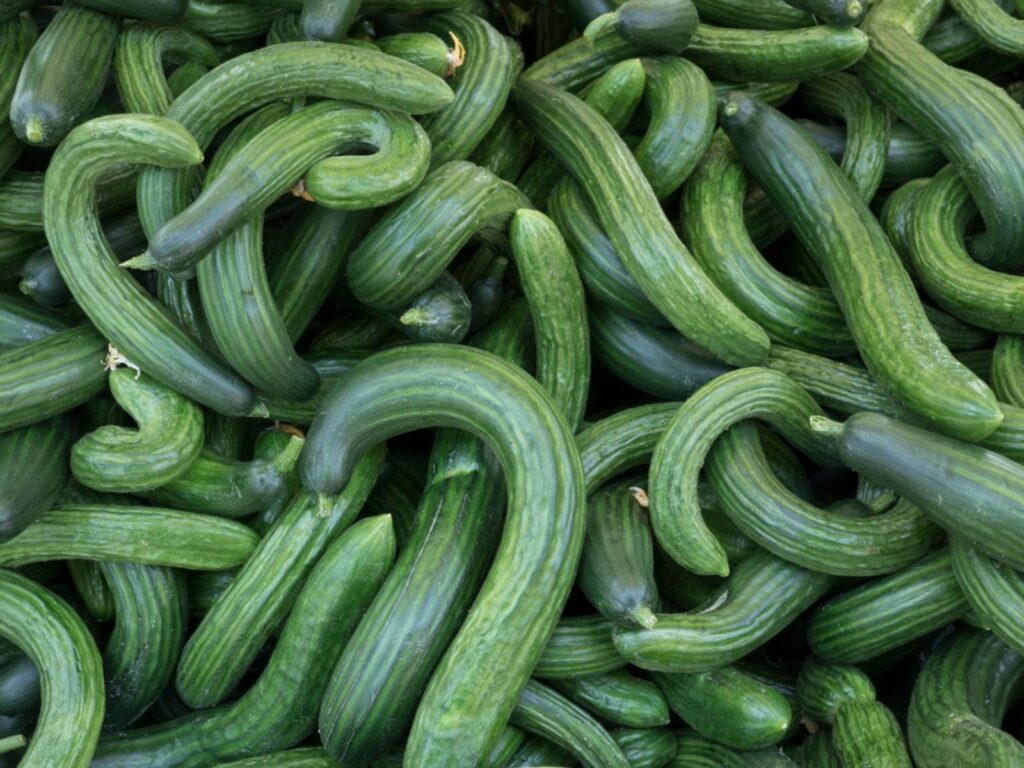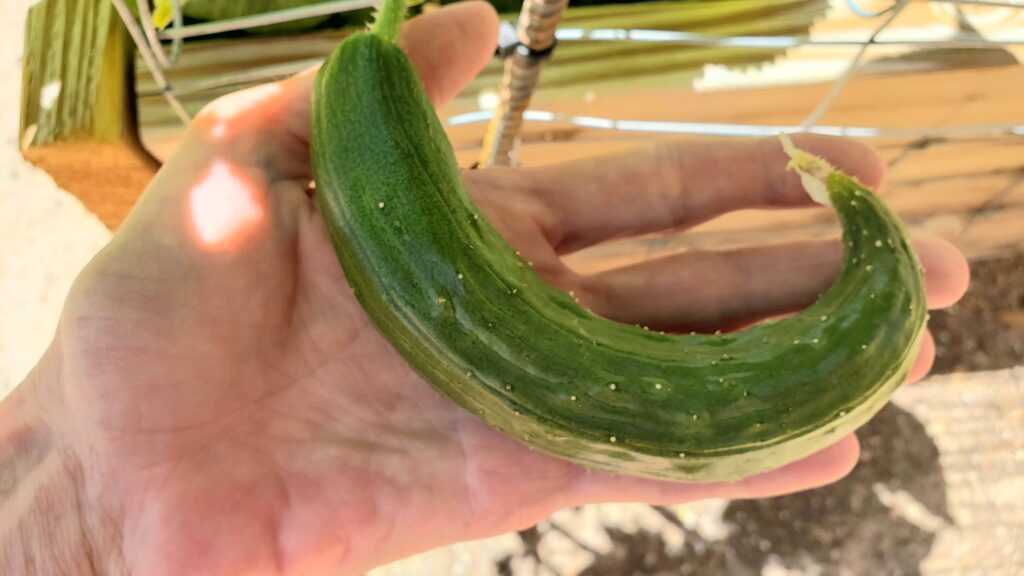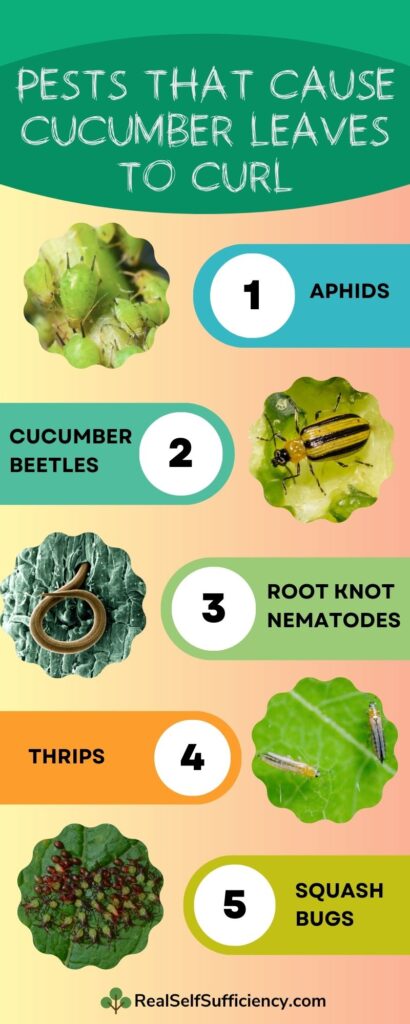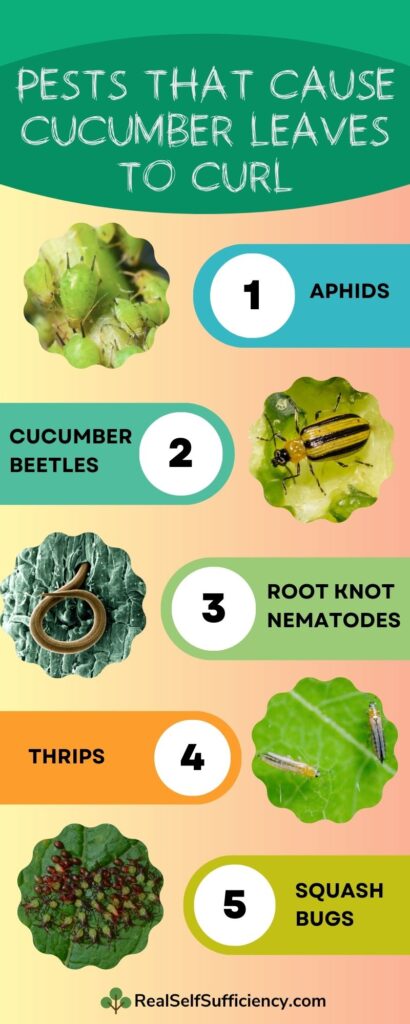So, you’re a gardening enthusiast, huh? Well, if you’ve ever found yourself scratching your head in confusion over those mysteriously curled cucumbers in your garden, you’re not alone. In this article, we’ll explore the various factors that can contribute to cucumber curling, from environmental conditions to pests and diseases. By understanding the causes behind this phenomenon, you’ll be able to take the necessary steps to prevent it and ensure your cucumbers grow straight and healthy. Let’s get to the root of this fascinating cucumber mystery, shall we?
Understanding the Causes of Curled Cucumbers
Curled cucumbers can be a common concern for gardeners and farmers alike. While cucumbers are typically known for their straight and elongated shape, there are several factors that can cause them to curl. In this article, we will delve into the various causes of curled cucumbers, including genetic factors, environmental conditions, cultural practices, insect and pest damage, disease and fungal infections, watering issues, nutrient imbalances, improper pruning, physiological disorders, and improper handling and storage.

Genetic Factors
Genetics play a significant role in determining the shape and growth pattern of cucumbers. Some cucumber varieties are more prone to curling than others. These varieties may have certain genetic traits that predispose them to curling. Additionally, inherited traits affecting shape, such as the presence of genes for curved fruit, can also contribute to the curling of cucumbers. In some cases, genetic mutations might occur, leading to irregularities in cucumber growth and shape.
Environmental Factors
Environmental conditions can greatly impact the development of cucumbers, including their shape. Temperature extremes, both hot and cold, can induce curling in cucumbers. High temperature fluctuations can cause stress to the plant, resulting in distorted fruit growth. Excessive humidity can also contribute to curled cucumbers, as it creates a moist environment that favors the development of certain fungal diseases. Additionally, inconsistent watering practices and poor air circulation can affect cucumber growth and increase the likelihood of curling.

Cultural Practices
Cultural practices, such as how cucumbers are planted and cared for, can influence their shape. Planting depth is an important factor to consider, as planting too deep or too shallow can impact cucumber growth and lead to curling. Spacing and crowding of plants can also affect the development of cucumbers, as overcrowding can limit sunlight and air circulation, potentially causing deformities. Proper trellage and support for growing cucumber vines can help maintain fruit shape. Mulching techniques can protect the roots and promote better moisture retention, reducing stress on the plant and minimizing the potential for curling.
Insect and Pest Damage
Insects and pests can cause significant damage to cucumber plants, which may result in curled cucumbers. Cucumber beetles, aphids, mites, and other common pests can feed on the plant’s leaves and stems, disrupting normal growth and development. Their feeding activity can cause stress to the plant, leading to curled fruit. Integrated pest management practices, including regular monitoring and appropriate pest control measures, can help reduce the risk of insect-related damage.

Disease and Fungal Infections
Various diseases and fungal infections can affect cucumber plants, leading to curling of the fruit. Cucumber mosaic virus, transmitted by aphids, can cause stunted growth and distortion in cucumbers. Downy mildew and powdery mildew are fungal diseases that thrive in humid conditions and can impact cucumber growth, including fruit shape. Bacterial wilt, caused by a bacterium called Erwinia tracheiphila, can result in wilted and curled cucumbers. Proper disease management strategies, such as crop rotation and regular monitoring, are crucial for controlling these issues.
Watering Issues
Watering practices can significantly impact cucumber growth and shape. Inadequate watering, either insufficient or irregular, can lead to stress in the plant, resulting in curled cucumbers. On the other hand, overwatering can cause root rot and nutrient leaching, again affecting the overall health and shape of the cucumbers. Consistent and adequate watering, ensuring proper moisture levels in the soil, can help minimize the risk of curling.

Nutrient Imbalances
Nutrient deficiencies can also contribute to the curling of cucumbers. A lack of nitrogen, phosphorus, potassium, or calcium can affect plant growth and development, leading to curled cucumbers. Nitrogen deficiency can result in stunted growth and chlorosis, affecting overall plant vigor. Phosphorus deficiency can lead to poor fruit development and discoloration. Potassium deficiency can cause leaf curling and reduced fruit size. Calcium deficiency can result in blossom end rot, a disorder characterized by black or brown patches on the fruit. Regular soil testing and appropriate fertilization can help prevent nutrient imbalances.
Improper Pruning
Pruning cucumber plants is an essential practice for maintaining plant health and shape. However, improper pruning techniques can have adverse effects, including curling of the fruit. Over-pruning, or excessive removal of plant parts, can disrupt the balance of the plant, affecting fruit development. Pruning at the wrong times can also disrupt flowering and fruiting patterns, potentially leading to curling. Careful and informed pruning practices, including removing excessive lateral growth and adhering to appropriate timing, can help prevent curling.

Physiological Disorders
Some physiological disorders can lead to curled cucumbers. These disorders are not caused by pests, diseases, or environmental conditions but are rather internal plant issues. While the exact causes of physiological disorders are often not well understood, they can manifest as curled cucumbers. Examples of such disorders include fruit abortion, where the cucumber plant naturally drops some fruit to redirect energy to the remaining ones, and fruit malformation due to hormonal imbalances. Proper plant care and attentive observation can help identify and manage these disorders.
Improper Handling and Storage
Improper handling and storage of cucumbers can also contribute to curling. Rough handling during harvest can cause physical damage to the fruit, resulting in deformities. Cucumbers should be gently harvested with care to avoid bruising or twisting. Additionally, incorrect storage conditions, including exposure to excessive heat or cold, can affect the quality and shape of cucumbers. Proper post-harvest handling and storage practices, including storing cucumbers in a cool and dry environment, can help maintain their shape and overall quality.
In conclusion, the causes of curled cucumbers can vary from genetic factors to environmental conditions, cultural practices, insect and pest damage, diseases and fungal infections, watering issues, nutrient imbalances, improper pruning, physiological disorders, and improper handling and storage. Understanding and addressing these factors can greatly help in preventing and managing curling in cucumbers, ensuring healthy and desirable fruit for your garden or farm. Remember to consider each aspect and implement appropriate measures to ensure the best possible growth and shape of your cucumbers.



